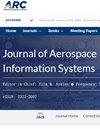Vision-Based Virtual Simulation Platform for Planetary Rovers
IF 1.5
4区 工程技术
Q2 ENGINEERING, AEROSPACE
引用次数: 0
Abstract
In order to evaluate the feasibility of planetary exploration missions, it is imperative to construct planetary terrain environments on the ground. Nevertheless, the implementation of this method is characterized by time-consuming and challenging factors. By contrast, resorting to simulation approaches represents a cost-effective and high-efficiency alternative, which can facilitate the simulation validation of planetary rover exploration missions in an effective manner. In this paper, a modular planet rover simulation platform is proposed; by building and overlaying multiple feature layers corresponding to the surface of the planet, we realize the simulation of high-resolution fine terrain and through adjusting the terrain parameters to meet the needs of different simulated terrain. The experimental results show that we have built a scene to satisfy the requirements of visual effects and physically realistic characteristics of simulation. Using an improved PatchMatch stereomethod to recover images captured real time by a planetary rover navigation camera in a virtual environment provided more complete three-dimensional terrain data for subsequent simulation validation of local path planning. Finally, a simulation environment that combines high-fidelity visual effects and kinematic characteristics supports visualizing the simulation platform: we propose a path planning method using global planning combined with local obstacle avoidance, and we obtain the optimal path that satisfies the kinematic constraints.基于视觉的行星漫游车虚拟仿真平台
为了评估行星探测任务的可行性,必须在地面上构建行星地形环境。然而,该方法的实施具有耗时和挑战性的特点。相比之下,采用仿真方法是一种经济高效的替代方案,可以有效地促进行星漫游者探测任务的仿真验证。提出了一种模块化行星漫游者仿真平台;通过构建和叠加多个与行星表面相对应的特征层,实现高分辨率精细地形的模拟,并通过调整地形参数来满足不同模拟地形的需要。实验结果表明,我们构建的场景满足了仿真的视觉效果和物理逼真特性的要求。利用改进的PatchMatch立体方法对虚拟环境下行星漫游车导航相机实时捕获的图像进行恢复,为后续局部路径规划的仿真验证提供了更完整的三维地形数据。最后,结合高保真视觉效果和运动学特性的仿真环境为仿真平台的可视化提供了支持:提出了一种采用全局规划与局部避障相结合的路径规划方法,得到了满足运动学约束的最优路径。
本文章由计算机程序翻译,如有差异,请以英文原文为准。
求助全文
约1分钟内获得全文
求助全文
来源期刊

Journal of Aerospace Information Systems
ENGINEERING, AEROSPACE-
CiteScore
3.70
自引率
13.30%
发文量
58
审稿时长
>12 weeks
期刊介绍:
This Journal is devoted to the dissemination of original archival research papers describing new theoretical developments, novel applications, and case studies regarding advances in aerospace computing, information, and networks and communication systems that address aerospace-specific issues. Issues related to signal processing, electromagnetics, antenna theory, and the basic networking hardware transmission technologies of a network are not within the scope of this journal. Topics include aerospace systems and software engineering; verification and validation of embedded systems; the field known as ‘big data,’ data analytics, machine learning, and knowledge management for aerospace systems; human-automation interaction and systems health management for aerospace systems. Applications of autonomous systems, systems engineering principles, and safety and mission assurance are of particular interest. The Journal also features Technical Notes that discuss particular technical innovations or applications in the topics described above. Papers are also sought that rigorously review the results of recent research developments. In addition to original research papers and reviews, the journal publishes articles that review books, conferences, social media, and new educational modes applicable to the scope of the Journal.
 求助内容:
求助内容: 应助结果提醒方式:
应助结果提醒方式:


